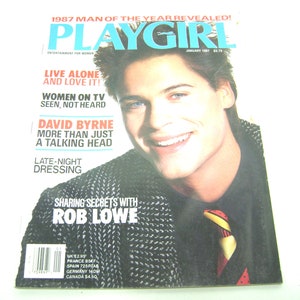

From March 2009 to February 2010, Playgirl appeared only online. The magazine covered issues like abortion, equal rights, and interspersing sexy shots of men and played a pivotal role in the sexual revolution for women.

In 1977 Lambert sold Playgirl to Ira Ritter who took over as publisher. The magazine was founded in 1973 by Douglas Lambert during the height of the feminist movement as a response to erotic men's magazines such as Playboy and Penthouse that featured similar photos of women. In the 1970s and 1980s, the magazine printed monthly and was marketed mainly to women, although it had a significant gay male readership.

I knew when I saw the early years how relevant it could be today.Playgirl is an American magazine that features general interest articles, lifestyle and celebrity news, in addition to nude or semi-nude men. “I think one of the best things about Playgirl is it can be interpreted in so many different ways,” he told Interview, “whether starting from entertainment for women to moving into the ’80s and the ’90s that were so celebrity-focused and then it turns into porn.

Nudity will, of course, be a focal point, but the relaunch will also make way for thought leaders of our era, much like Playgirl once attracted contributors like Eve Babitz and Maya Angelou.” Sure, the infamous centerfold will make its comeback, but in a far more decadent way. He “will unveil a modern mold for the traditionally nudie magazine this month - a mold that looks beyond a simple state of undress. Playgirl‘s new editor Jack Lindley-Kuhns had this to say about what fans can expect from the mag’s latest iteration. “From 1973 to 2016, when the magazine folded, the definition and shape of masculinity have evolved tremendously.” “The title, which dates back to 1973, has a scantily clad history of putting the male form on full display,” wrote Interview’s Mitchell Nugent. The street day for the first issue of the relaunch is this coming Monday, October 26.


 0 kommentar(er)
0 kommentar(er)
